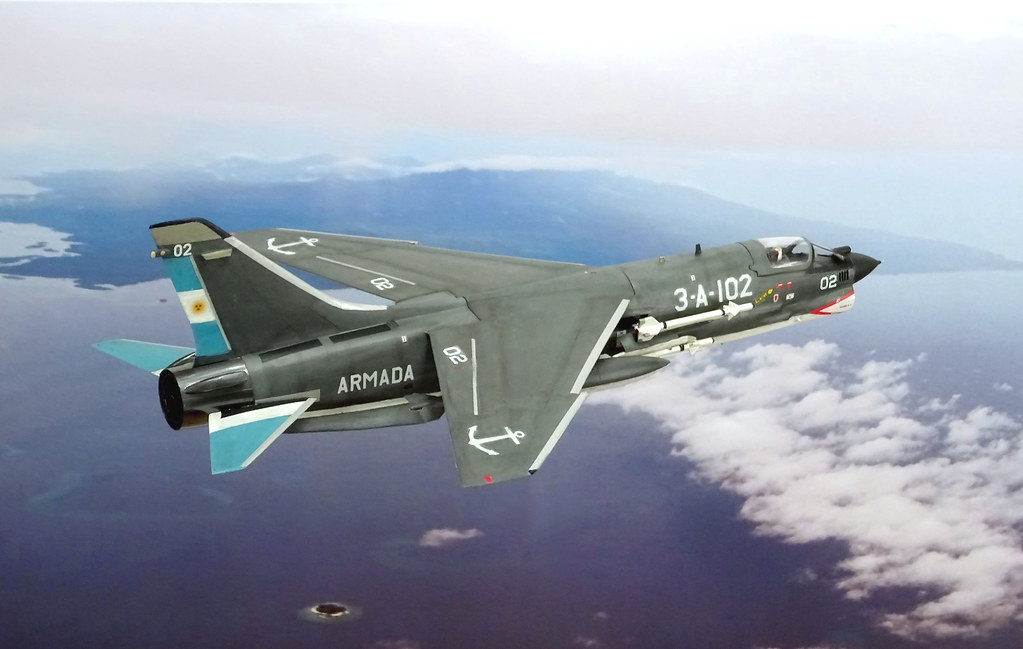February 2, 1959
Buenos Aires, Argentina
Argentina agrees to buy sixty refurbished F11F-1 Tiger fighters, seventy-five rebuilt A4D-2 Skyhawks, six WF-1 Tracers and four TF-1 Traders to equip their new carrier and training squadrons. Thirty-six of the Tigers will serve with the Comando de la Aviación Naval Argentina while the remaining twenty four will be used as a source of spare parts and as an attrition reserve. Likewise, only forty-eight of the Skyhawks will be actively flown at any one time. The rest will be used for parts and for attrition replacement. The Tiger, which is capable of attaining mach 1.1, is the first supersonic fighter purchased by any South American country. Argentina had expressed interest in acquiring the F8U-2 Crusader for their new carrier, however the United States flatly refused to sell the new fighter to them. The United States Navy attaché had also emphasized that operating the Tiger alongside the Skyhawk would greatly ease the logistics burden on Argentina as both aircraft used the same Wright J65 engine, though the F11F's engine was equipped with an afterburner.
At the same time as the order for the combat aircraft are placed, two aircraft licenses are purchased for the production of Beechcraft T-34 Mentor primary trainers and Lockheed T2V SeaStar carrier capable jet trainers. A latter addendum to this license also allows for the production of T-33 land based jet trainers for the Argentine Air Force. These aircraft are to be built by the state owned aircraft firm Fábrica Militar de Aviones in Cordoba. Both of the trainers selected by Argentina are carrier capable in order to train student Naval Aviators in shipboard operations and to reduce the losses of front line naval aircraft from inexperienced pilots crashing while attempting to land on a carrier for the first time.
Based on the F-80 Shooting Star, America's first jet fighter, the simplicity of the SeaStar trainer is seen as a positive for the fledgling aircraft manufacturer that had struggled to build indigenous designs. The first airframes will be assembled from American supplied kits, with the FMA increasing the amount of domestically produced parts as it gains experience in modern manufacturing techniques. It was hoped that the experience gained by building the jet trainer would help the FMA build more complex designs, such as the I.Ae. 37 and I.Ae. 48, in the future. A third license request, to build Douglas A4D Skyhawks, is declined.

